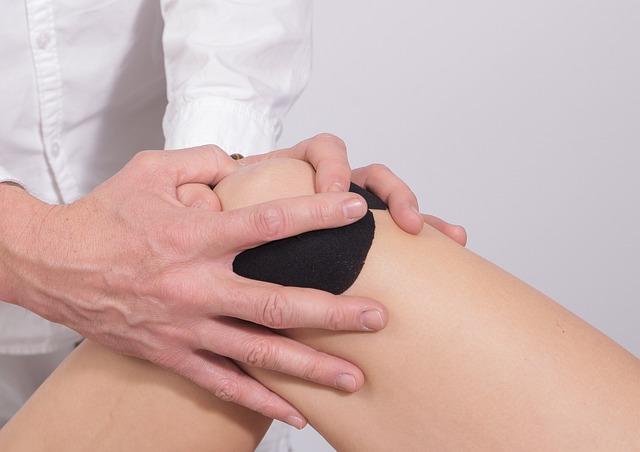The popliteus muscle is a crucial component of the lower leg, playing a vital role in the stabilization and movement of the knee joint. This article will delve into the anatomy and function of the popliteus muscle, its involvement in injuries, and exercises for maintaining its health and strength.
Table of Contents
The Anatomy of the Popliteus Muscle
A Deep Muscle of the Knee Joint
The popliteus muscle is a small, thin, flat, triangular-shaped musculotendinous complex situated in the lower leg. It consists of the popliteus muscle itself and the popliteofibular ligament. As a deep muscle of the knee joint, it forms the floor of the popliteus fossa, a depression located at the back of the knee.
Origin, Innervation, and Blood Supply
The muscle fibers of the popliteus originate from the lateral condyle of the femur and the posterior horn of the lateral meniscus. The tibial nerve is responsible for the innervation of the popliteus muscle. Blood supply to this muscle comes from two arteries: the medial inferior genicular branch of the popliteal artery and the muscular branch of the posterior tibial artery.
Functions of the Popliteus Muscle
Knee Flexion and Rotation
The popliteus muscle assists in both knee flexion and rotation. Its unique positioning and attachments enable it to contribute to the medial and lateral rotation of the knee joint.
Posterolateral Stabilization
As one of the main posterolateral stabilizers of the knee joint, the popliteus muscle plays a critical role in maintaining the stability and integrity of the knee during various movements and activities.
Lateral Meniscus Retraction
During knee flexion, the popliteus muscle retracts the lateral meniscus posteriorly. This action prevents the lateral meniscus from being entrapped between the femur and tibia, thus protecting it from potential injury.
Involvement in Injuries
Posterolateral Corner Injuries
The popliteus muscle is commonly involved in posterolateral corner (PCL) injuries of the knee. These injuries can result in pain, swelling, and limited mobility, impacting daily activities and sports performance.
Weakness and Injury Due to Poor Movement Patterns
Poor movement patterns and posture can place undue stress on the popliteus muscle, making it prone to weakness and injury. Maintaining proper alignment and biomechanics during physical activity is essential to avoid straining this vital muscle.
Stretches, Treatment and Exercises for Popliteus Muscle Pathology
The treatment for popliteus muscle pathology is similar to any soft tissue injury or tendinopathy. It is essential to consult with a certified physical therapist before starting any training regimen to ensure appropriate treatment and exercise prescription. The following exercises can help strengthen the popliteus muscle and improve overall knee health:
Exercise 1: Knee Extension
- Sit on a table or desk with a thin pad under the knee.
- Extend the knee with the foot flexed, holding for 3-5 seconds.
- Lower the leg slowly and under control.
- Perform 10 repetitions for each leg, with 2-3 sets as needed.
Exercise 2: Knee Flexion (Standing)
- Stand on a 2-inch board or small step.
- Bend the knee to a 90-degree angle while keeping the foot flexed.
- Slowly lower the leg back down.
- Perform 10 repetitions for each leg, with 2-3 sets as needed.
Exercise 3: Heel and Calf Raises
- Stand barefoot on a 2-inch board or aerobic step with toes and balls of feet on the board and heels on the floor.
- 2. Raise vertically up as high as possible onto the toes.
- Slowly lower the heels back down.
- Perform 10 repetitions for each leg, with 2-3 sets as needed.
- To isolate and strengthen the inner or outer portion of the calves, turn the toes inward or outward during the exercise.
Exercise 4: Wall Squats
- Stand with the head, back, and hips against a wall.
- Bend the knees until just before a sitting position is reached.
- Hold the position for 5-10 seconds.
- Slowly come back up to the starting position.
- Perform 5-10 repetitions as needed.
Exercise 5: Swimming
Swimming is an excellent low-impact exercise for individuals with bad knees. Incorporate various swimming exercises, such as treading water, front crawl, backstroke, kicking laps with a flutter board, jogging in water, or participating in water aerobics, to improve knee health and the strength of the muscles around the joint.
The Importance of Strengthening the Muscles Around the Knee
By strengthening the muscles surrounding the knee joint, regular strain on the knee can be relieved, pain can be reduced, and further injury can be avoided. A strong and balanced muscular system is crucial for maintaining optimal knee function and overall lower limb health.
Exercise Precautions
When engaging in the exercises mentioned above, it is crucial to never experience sharp or shooting pain. If pain is experienced during any of these exercises, modify the position or consult a doctor or physical therapist for guidance. Proper form and technique are essential to ensure the effectiveness of the exercises and to prevent potential injuries.
Conclusion
The popliteus muscle is a vital component of the lower leg, playing a significant role in the stabilization and movement of the knee joint. Understanding its anatomy, functions, involvement in injuries, and proper treatment and exercise techniques can help individuals maintain optimal knee health and performance.
By incorporating the appropriate exercises and following the guidance of healthcare professionals, individuals can improve the strength and stability of the popliteus muscle, ultimately contributing to overall knee health and function.

